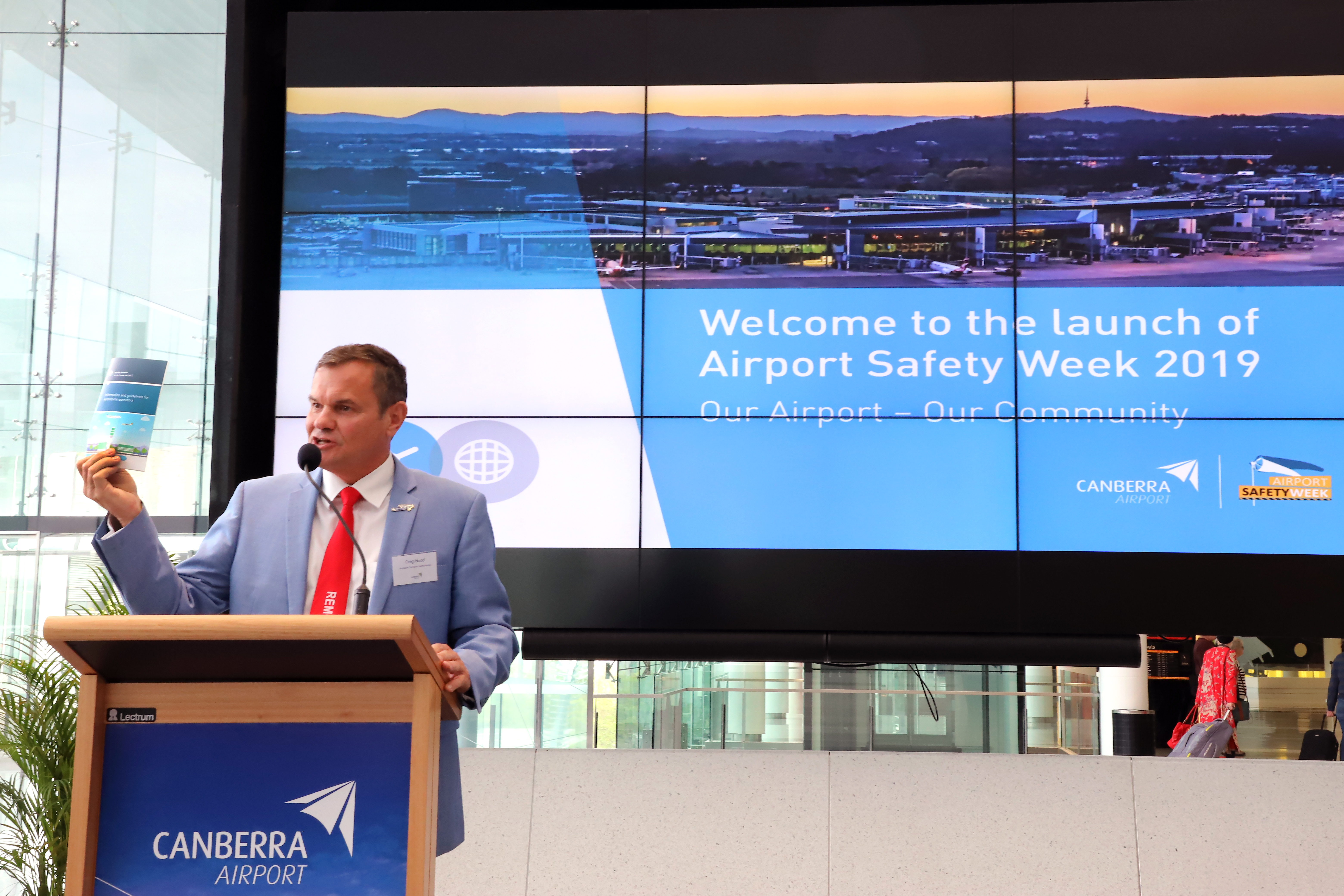A new ATSB publication details the requirements of the national transport safety investigation agency following an on-airport aircraft accident or incident.

Launched today at Canberra International Airport’s celebrations to mark the start of Airport Safety Week, the Information and guidance for aerodrome operators publication outlines airport and aerodrome operators’ incident and accident reporting requirements to the ATSB, what to expect once an occurrence has been reported, and how to help preserve evidence for an ATSB investigation.
Emergency services and airport personnel have a critical role in responding to aircraft accidents and incidents, however this Airport Safety Week the ATSB is reminding them the importance of wreckage and ground scars being as little disturbed as possible.
“Airport operators having a thorough understanding of the role of the ATSB and the investigation process in the event of an aviation accident will help minimise disruption to airport operations,” ATSB Chief Commissioner Greg Hood said.
“This Airport Safety Week we are reminding airport operators of three key responsibilities in the event of an aviation accident: respond, report and preserve. Respond with their aerodrome emergency plan, report the accident to the ATSB, and along with emergency services preserve the accident site.”
Over the 10 years from 1 October 2009 to 1 October 2019, the ATSB’s National Aviation Occurrence Database shows approximately 25,500 incidents, serious incidents, and accidents have occurred within a one kilometre radius of Australia’s 31 towered civil and military airports. Of these, the ATSB has or is currently investigating 262 serious incidents and accidents.
Evidence preservation and collection is the first phase of any of our investigations,” Chief Commissioner Hood said.
“Critical evidence such as witness marks or small debris can be located some distance from the main accident site and spread over a very large area"
"So it is imperative that all first responding agencies and airport operators proactively preserve all evidence at an accident site until our investigators arrive. This will greatly assist our investigators in their task of determining the factors that contributed to the occurrence.”
ATSB Transport Safety Investigators are based across the country and are on call 24 hours a day to deploy to an accident site as soon as practical, but the ATSB is not a first responder agency and it may take several hours before investigators arrive on scene.
“As we deploy, the ATSB will provide advice to first responders and airport operators to secure the accident site until we arrive,” Chief Commissioner Hood said.
“The ATSB is mindful of the effects an investigation can have on airport operations, however our priority will always be on conducting of a thorough and meticulous investigation to ensure that any safety issues are identified and addressed.
“Having a thorough understanding of our roles and requirements will greatly assist the ATSB accident investigation process, and help us to prevent similar accidents and incidents in the future.”
The Information and guidelines for aerodrome operators can be downloaded from the ATSB’s website, or printed copies can be ordered by emailing atsbinfo@atsb.gov.au


